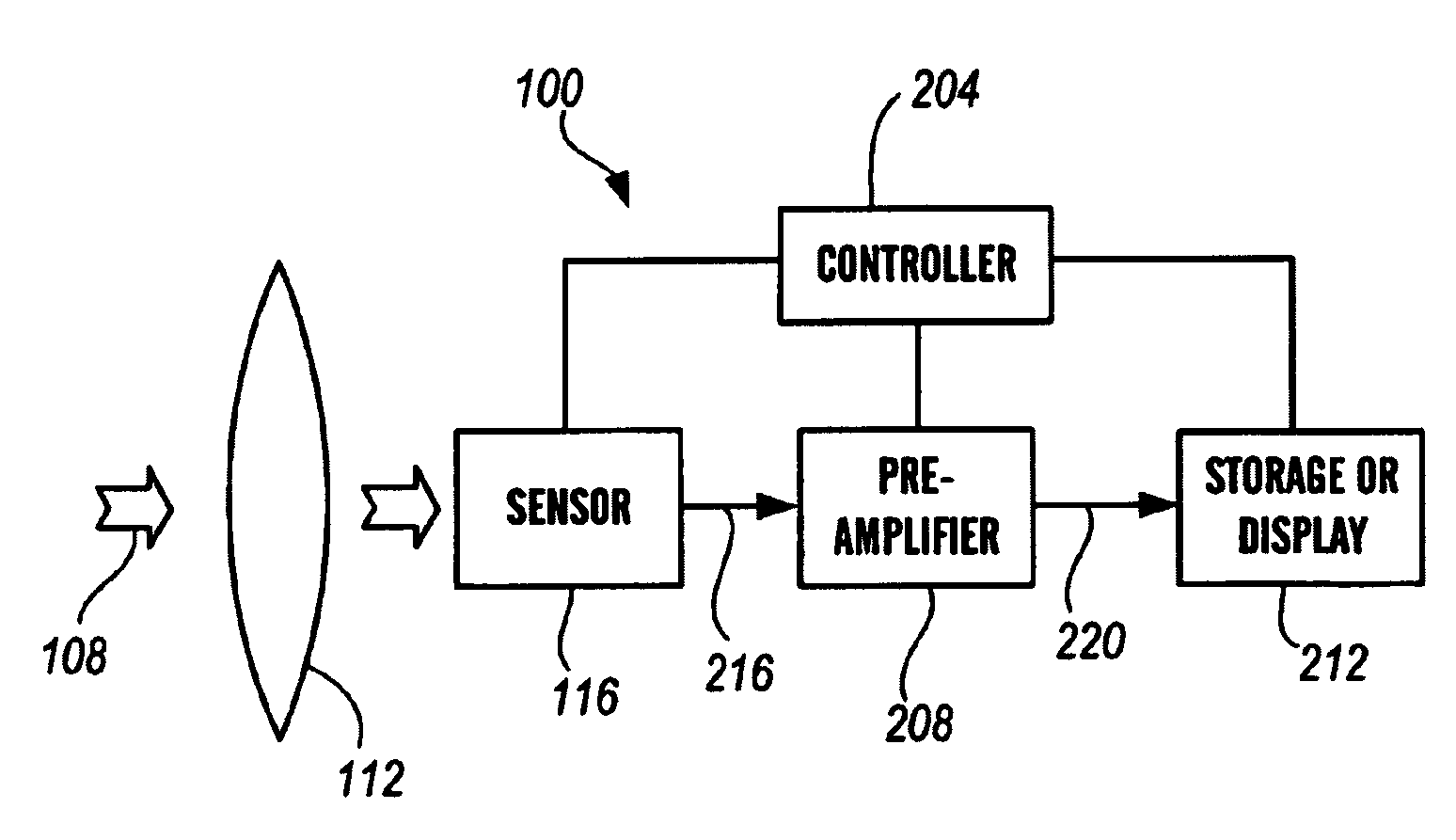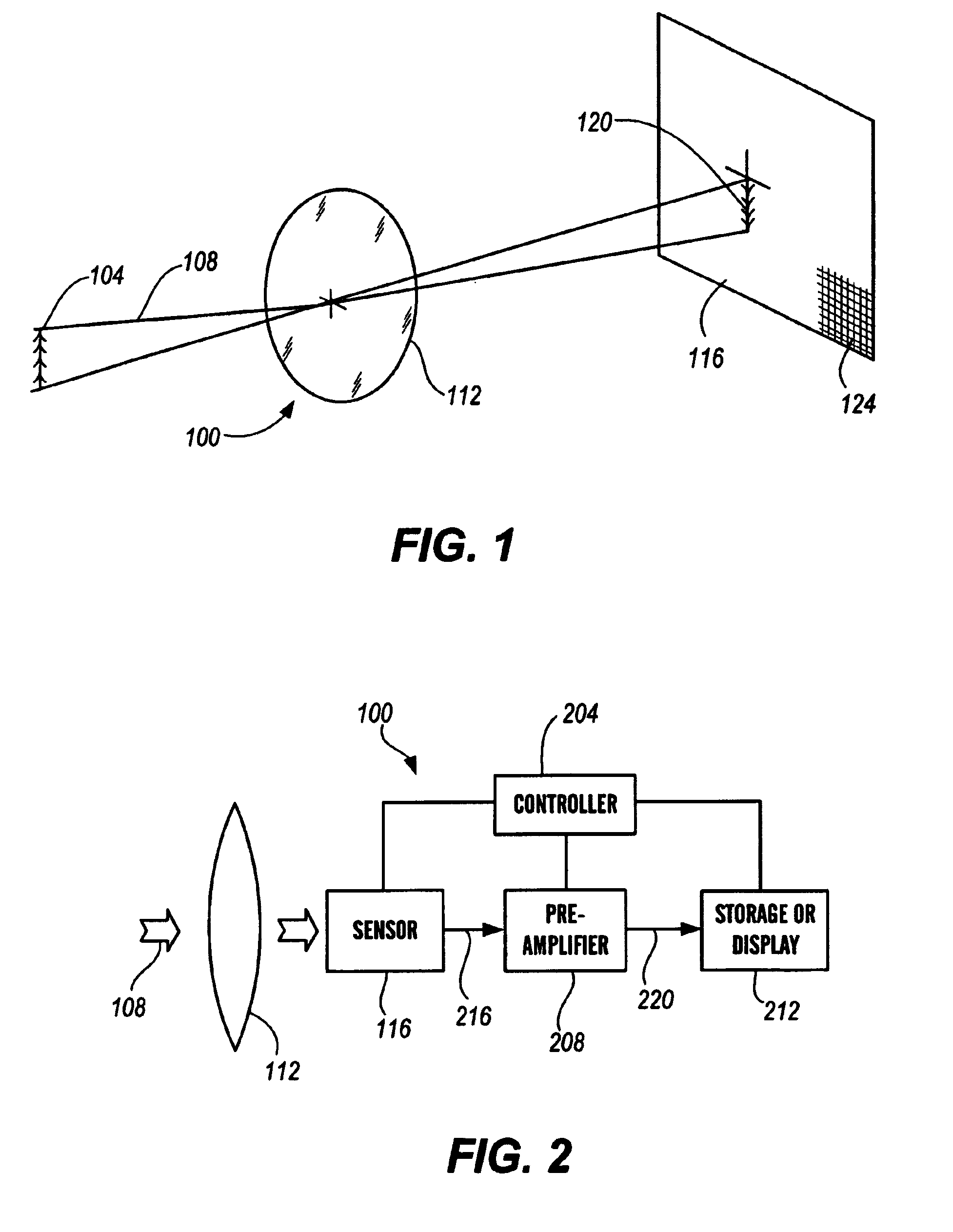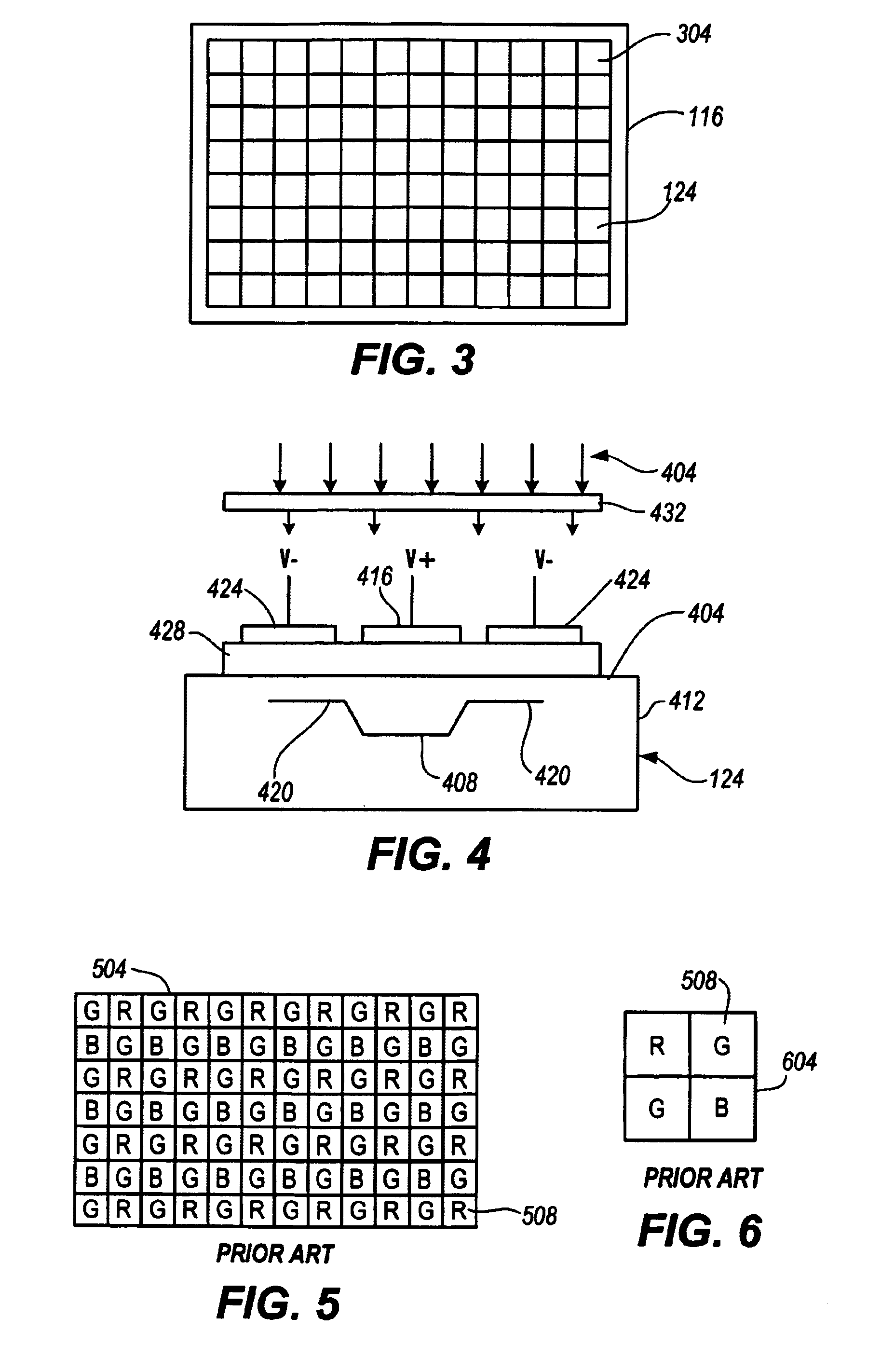One chip, low light level color camera
a color camera and low light level technology, applied in the field of low light level imaging devices, can solve the problems of monochromatic image, limited image resolution available at the phosphorous screen, and inability to provide chrominance information in combination with high sensitivity at low light levels, so as to reduce the aliasing of color features
- Summary
- Abstract
- Description
- Claims
- Application Information
AI Technical Summary
Benefits of technology
Problems solved by technology
Method used
Image
Examples
Embodiment Construction
[0037]According to the present invention, a one chip, low light level color imaging device or camera is provided.
[0038]In FIG. 1, a digital imaging device 100 configuration suitable for use in connection with the present invention is illustrated. As shown in FIG. 1, an object 104 reflects light 108 that is focused by a lens or lens system 112 onto an image sensor 116 as an image object 120. The image sensor 116 is comprised of a plurality of photosensitive elements or pixels 124. The pixels 124 are distributed over the surface of the image sensor 116 in a two-dimensional array. The pixels 124 generally convert the light focused onto the surface of the image sensor 116 by the lens 112 (i.e. the image object 120) into electronic signals.
[0039]In a conventional color imaging device, each of the pixels 124 of the image sensor 116 receive light within one of three overlapping frequency bands. The relative intensity of the light received by individual pixels 124 included in a group of pix...
PUM
 Login to View More
Login to View More Abstract
Description
Claims
Application Information
 Login to View More
Login to View More - R&D
- Intellectual Property
- Life Sciences
- Materials
- Tech Scout
- Unparalleled Data Quality
- Higher Quality Content
- 60% Fewer Hallucinations
Browse by: Latest US Patents, China's latest patents, Technical Efficacy Thesaurus, Application Domain, Technology Topic, Popular Technical Reports.
© 2025 PatSnap. All rights reserved.Legal|Privacy policy|Modern Slavery Act Transparency Statement|Sitemap|About US| Contact US: help@patsnap.com



